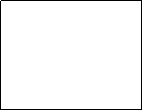

 WELCOME!
WELCOME!
Background
As a pilot school in Hong Kong participating in the LEAD programme (Leading through Engineering, Art & Design), organized by the Hong Kong Federation of Youth Groups, in collaboration with the Media Laboratory of Massachusetts Institute of Technology, U.S.A and The Chinese University of Hong Kong, St. Paulˇ¦s Convent School adopts an innovative approach of inventing and introducing an unprecedented integrative curriculum into normal classroom teaching.
Programme Objectives
Students will be able to develop the followings in the programme :
 The curriculum
The curriculum
The student-centered innovative curriculum is designed for F.1 students according to the principle of constructivism. It aims at developing studentsˇ¦ multiple talents with particular focus on :
- English
language,
- knowledge in
engineering, art & design and computer literacy,
- generic
skills, e.g. problem-solving skills, creativity, critical-thinking skills,
etc,
- values and
attitudes, e.g. being a responsible, pro-active, self-evaluative and
independent learner
through hands-on learning experience and learning by trials-and-errors in a risk-free and open environment. The curriculum is also characterized by an enquiry-based and process-oriented teaching and learning approach.
 The learning process
The learning process
The LEAD programme commenced in February 2005 and lasted for 3 months. Two 3-hour workshops, which were a combination of the studentsˇ¦ Art, Computer and some English lessons, were scheduled within normal school hour per cycle. The workshops were delivered by two trained school teachers and totaled up to 50 hours. In the process, students learnt the followings:
- Acquiring
basic knowledge in engineering, art and computer literacy
- Conducting
research
- Exploring :
theme, robots to be built
- Using
creativity in their designs
- Constructing
and programming robot models
- Experimenting
robot models built
- Encountering
difficulties
- Seeking
solutions to the problems encountered
- Re-constructing
and / or re-programming of robots
- Injecting
artistic elements in their work
- Exchanging
views among peers in a constructive and collaborative environment
- Reflecting on
on-going practices
- Making
necessary improvements
- Applying I.T.
in class
Studentsˇ¦ English language learning was also strengthened in the process as there was frequent application of authentic English communication. Students were to conduct research to justify their designs, give oral presentations, write learning logs regularly to reflect on the on-going practices.
Besides, studentsˇ¦ thinking abilities were also stretched in the process. The record of problems encountered and solutions sought recorded in their learning logs served as strong testimony of their practice of higher order thinking skills and the application of the Habits of Mind in solving problems in their daily life.
Here is the summary of the
learning process:


Showcase of studentsˇ¦ work
A showcase of
studentsˇ¦ work to the general public on the general theme ˇ§Hong Kong


